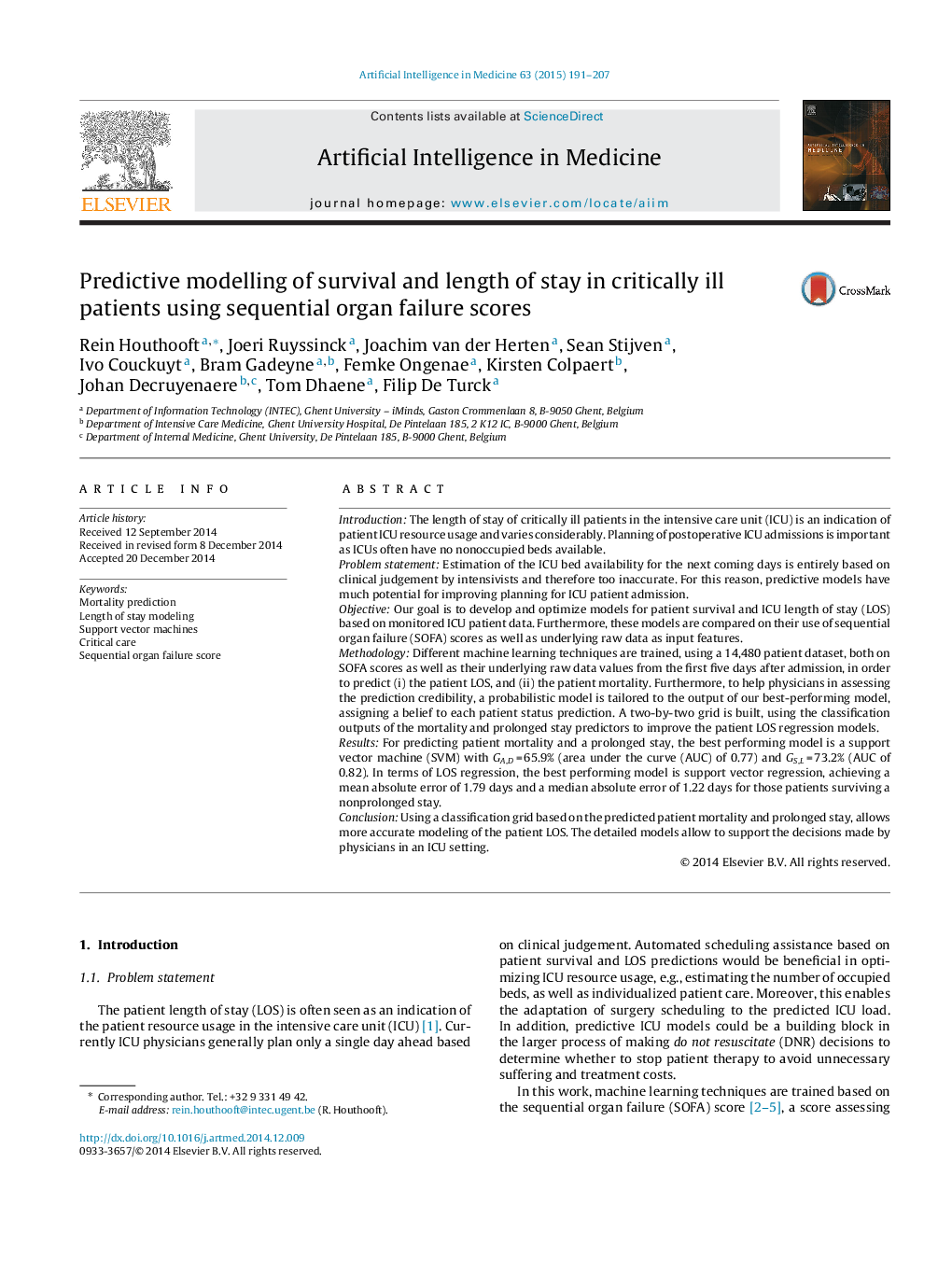| کد مقاله | کد نشریه | سال انتشار | مقاله انگلیسی | نسخه تمام متن |
|---|---|---|---|---|
| 377673 | 658811 | 2015 | 17 صفحه PDF | دانلود رایگان |
• A dataset of 14,480 critically ill patients within the ICU was collected.
• Machine learning models are constructed to predict patient length of stay and mortality.
• Prediction accuracy was improved by using a two-by-two classification grid.
• Probabilistic model outputs can improve interpretation by physicians.
• Moving data window shows potential for real-time ICU patient analysis.
IntroductionThe length of stay of critically ill patients in the intensive care unit (ICU) is an indication of patient ICU resource usage and varies considerably. Planning of postoperative ICU admissions is important as ICUs often have no nonoccupied beds available.Problem statementEstimation of the ICU bed availability for the next coming days is entirely based on clinical judgement by intensivists and therefore too inaccurate. For this reason, predictive models have much potential for improving planning for ICU patient admission.ObjectiveOur goal is to develop and optimize models for patient survival and ICU length of stay (LOS) based on monitored ICU patient data. Furthermore, these models are compared on their use of sequential organ failure (SOFA) scores as well as underlying raw data as input features.MethodologyDifferent machine learning techniques are trained, using a 14,480 patient dataset, both on SOFA scores as well as their underlying raw data values from the first five days after admission, in order to predict (i) the patient LOS, and (ii) the patient mortality. Furthermore, to help physicians in assessing the prediction credibility, a probabilistic model is tailored to the output of our best-performing model, assigning a belief to each patient status prediction. A two-by-two grid is built, using the classification outputs of the mortality and prolonged stay predictors to improve the patient LOS regression models.ResultsFor predicting patient mortality and a prolonged stay, the best performing model is a support vector machine (SVM) with GA,D = 65.9% (area under the curve (AUC) of 0.77) and GS,L = 73.2% (AUC of 0.82). In terms of LOS regression, the best performing model is support vector regression, achieving a mean absolute error of 1.79 days and a median absolute error of 1.22 days for those patients surviving a nonprolonged stay.ConclusionUsing a classification grid based on the predicted patient mortality and prolonged stay, allows more accurate modeling of the patient LOS. The detailed models allow to support the decisions made by physicians in an ICU setting.
Journal: Artificial Intelligence in Medicine - Volume 63, Issue 3, March 2015, Pages 191–207
